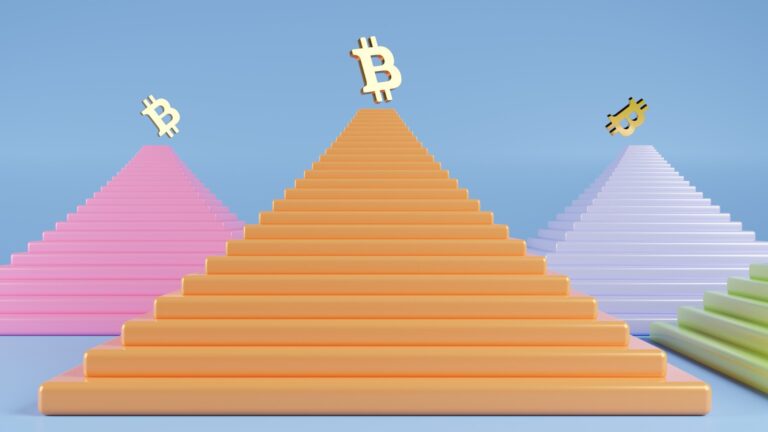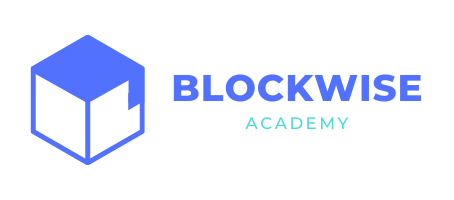BlockWise
- 11 Dec, 2022
- 0 Comments
- 6 Mins Read
Mastering Bitcoin 101: A Complete Guide For Beginners

Bitcoin Basics
Bitcoin was created in 2009 by an unidentified individual (or group) named Satoshi Nakamoto.
– It is decentralised, meaning any government or financial institution does not control it.
– It enables peer-to-peer transactions without intermediaries such as banks.
Bitcoin uses blockchain technology, which is a decentralised digital ledger that tracks all transactions. Blockchain technology means that all transactions are transparent and secure, as they are recorded on a public ledger that is accessible to anyone.
Because there are no intermediaries to authenticate transactions, blockchain technology offers faster transaction speeds and reduced fees compared to traditional finance.
In order to use Bitcoin, you will need to create a wallet. When creating a Bitcoin wallet you will generate a public key, which is a unique address that you can use to receive Bitcoin, and a private key, which is like a password that allows you to access your Bitcoin. Never share your private key with anyone.

Mining
Bitcoin is created through a process called mining. To mine bitcoins, powerful computers called miners use specialized software to solve complex mathematical problems.
The first miner to solve the problem is able to add a new ‘block‘ to the Bitcoin blockchain. This ‘block’ contains a list of bitcoin transactions that other people are wanting to process. The miner that adds a new block is rewarded with bitcoins, called a block reward.
Currently, the block reward for mining a block is 6.25 bitcoins. This reward is halved every 210,000 blocks, roughly every four years. The next halving is expected to occur in May 2024. This is part of a built-in mechanism in the Bitcoin code, known as the Bitcoin halving, which helps to control the supply of bitcoins and keep inflation in check.
The difficulty of mining bitcoin adjusts every 2016 blocks. This ensures the rate of bitcoin creation remains steady (~10 min per block), regardless of the number of miners in the network.
Miners also earn transaction fees when they mine a block. These fees are paid by the people whose transactions are being processed in the block. These transaction fees are less significant than the block rewards but are still an essential source of income for miners.
It is important to note that mining bitcoin is not easy and requires a lot of computational power, energy, and specialized equipment.

Bitcoin Supply
One of the most critical characteristics of bitcoin is its finite quantity. Only 21 million bitcoins will exist (more than 18 million currently in circulation). This is because the code that powers the Bitcoin network is programmed to automatically reduce the amount of new bitcoin produced over time as the total amount nears 21 million.
The limited supply of Bitcoin has several benefits;
- Firstly, it helps to control inflation. As the supply of Bitcoin is fixed, there is no possibility of any institution or government creating more Bitcoin. This is intended to make Bitcoin a more stable store-of-value than fiat currencies, which can experience inflation and devaluation.
- Secondly, the limited supply of Bitcoin creates scarcity, which can drive up its value. As demand for Bitcoin increases, the limited supply will make it more valuable. This is similar to how gold and other precious metals are valued.
- Finally, the limited supply of Bitcoin makes it a decentralized alternative to traditional investments. It is not controlled by any single entity, it is scarce, and its price is based on market demand rather than political or monetary policies. This makes it a valuable addition to any investment portfolio.

Using Bitcoin
Using Bitcoin is relatively simple and similar to using traditional forms of currency. Here are the key steps to get started:
Set up a Bitcoin wallet: A Bitcoin wallet is a digital wallet where you can store, send and receive bitcoins. There are various types of wallets available, such as software wallets, hardware wallets, and paper wallets. Each type has its own set of benefits and drawbacks, so it’s important to choose a wallet that suits your needs
Purchase Bitcoin: Once you have a wallet, you can purchase Bitcoin from a variety of sources, such as a cryptocurrency exchange, a Bitcoin ATM or even from another person. When you create a Bitcoin wallet, you will receive a unique address, called a public key, that you can use to receive Bitcoin.
Send and receive Bitcoin: Once you have purchased Bitcoin, you can use it to make payments or send it to another person. To make a payment, you will need the recipient’s public key. You can also receive Bitcoin by sharing your public key with the sender.
Keep your Bitcoin safe: It is important to keep your Bitcoin safe by storing it in a secure wallet and by keeping your private key safe. Your private key is like a password that allows you to access your Bitcoin, so it’s important to keep it safe and never share it with anyone.the

Pros & Cons
Pros:
- Decentralized: Bitcoin is not controlled by any government or institution, meaning it is not subject to the same political and monetary policies as traditional currencies.
- Transparent: Bitcoin transactions are recorded on a public ledger called the blockchain. All transactions are transparent and can be tracked.
- Borderless: Bitcoin can be used to make transactions anywhere in the world, as long as there is an internet connection.
- Fast: Bitcoin transactions can be processed quickly, often in just a few minutes.
- Secure: Bitcoin transactions are secured by complex mathematical algorithms, making them difficult to hack or counterfeit.
Cons:
- Volatility: The value of Bitcoin can be highly volatile, meaning that its value can fluctuate significantly in a short period.
- Limited acceptance: Only some merchants and service providers accept Bitcoin, so it may be less widely accepted than traditional forms of currency.
- Lack of regulation: Because Bitcoin is not regulated by any government or institution, it is not backed by any assets, and there is no guarantee of its value.
- Complexity: Bitcoin can be difficult to understand for beginners, and its underlying technology, blockchain, is complex and challenging to comprehend.
- Risk of hacking: Bitcoin’s decentralized nature also makes it vulnerable to hacking and other forms of cybercrime.
Bitcoin has been praised for its potential to revolutionize the financial industry and make transactions faster and more secure. Yet, it often receives criticism for its volatility and potential use in illegal activities. Bitcoins volatility means a certain level of risk is involved in buying and holding it. Additionally, the perceived anonymity of bitcoin has made it a popular choice for criminal activity, although, this is now regarded as a misconception.

Recap
Blockchain: Bitcoin transactions are recorded on a public ledger called the blockchain. This ledger is a decentralized digital record of all Bitcoin transactions.
Mining: Bitcoin is created through mining, where powerful computers called miners use specialized software to solve complex mathematical problems. When a miner successfully solves a problem, they are rewarded with a certain number of bitcoins, called a block reward.
Wallet: A Bitcoin wallet is a digital wallet where you can store, send and receive bitcoins. Various types of wallets are available, such as software wallets, hardware wallets, and paper wallets.
Public and private keys: To use Bitcoin, you will need a public key, which is a unique address that you can use to receive Bitcoin, and a private key, which is like a password that allows you to access your Bitcoin.
Transactions: Bitcoin can be used to make transactions such as paying for goods and services or transferring money to other people.
As with any new technology, bitcoin has both potential benefits and risks.
Consider these before deciding whether to invest.



